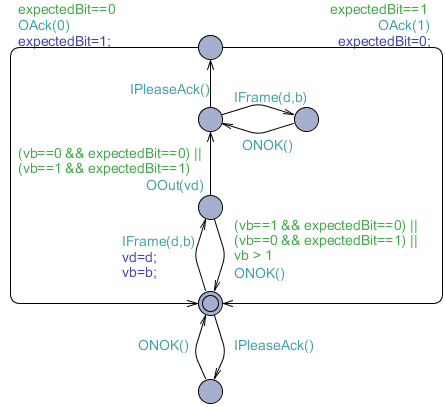
Tag: version-0-1
Tomte is a tool that fully automatically constructs abstractions for automata learning. Usually, a component implementing the learning algorithm (the learner) is directly conncected to the SUT (the teacher). By observing how the SUT responds to queries sent by the learner, a model of the behavior of the SUT can be constructed. This is not enough for learning models of realistic software components which, due to the presence of program variables and data parameters in messages, typically have much larger state spaces.

This inspired us to build the Tomte tool, which is placed in between the SUT and the learner, and transforms the large set of actions of the SUT into a small set of abstract actions that can be handled by the learner, see Figure 1. This means the inference is performed on a small alphabet and once the learning is done the abstract model is combined with the abstraction to construct a concrete version of the SUT. This gave us the idea for the name of the tool. Tomte is the creature that shrinked Nils Holgersson into a gnome and (after numerous adventures) changed him back to his normal size again.
We use LearnLib as our basic learning tool and therefore the abstraction of the SUT may not exhibit any nondeterminism: if it does then LearnLib crashes and we have to refine the abstraction. This is exactly what is implemented in the Tomte tool. As learner also other inference algorithms can be used as long as they detect nondeterministic behavior.
Using Tomte we have succeeded to learn - fully automatically - models of several realistic software components, including the biometric passport and the SIP protocol. All models we used in our experiments can be found in the .zip file in the Download section. If you want to learn your own model, please study the Making Your Own SUT section.
The Tomte tool: tomte-0.1.zip
Platforms supported: Windows, Linux and Mac OS X
For other releases look here.
With Tomte we can learn a model. However to verify what we have learned is really equivalent to the SUT we use the the CADP toolset. Note: this toolset is not required for learning.
Step 1 : learn model Run the 'tomte_learn_model' command with the model you want to learn. When running without arguments it wil show you the models available :
> tomte_learn_model tomte_learn_model: error: too few arguments usage: tomte_learn_model [-h] model available models : - ABP_Receiver3 - FWGC2 - Login_XMPP_2 - SIP2_1param - Channel_Frame - Repdigit_Palindrome_Checker4_Complete2 - BiometricPassport - ABP-output
An example run :
> tomte_learn_model BiometricPassport ...
Notes:
Step 2: check equivalence learned model with teacher model
For equivalence checking the CADP tool set is needed.
Only the lotos subfolder in the results folder is needed. If you are learning the model on a machine where the CADP toolset is not installed. Then only the learned lotos/ subfolder needs to be copied to the machine with the CADP toolset installed to check equivalence.
In this lotos/ results folder a bash script can be found with which you can do equivalence checking. The only requirement for this script to run is to set the path to the installed CADP toolset in the $CADP environment variable. For example :
> export CADP=/vol/cadp/
Now you can do equivalence checking as follows :
> cd tomte-0.1/results/BiometricPassport/lotos/ > ./compare_lotos_models.sh BiometricPassport ... TRUE or FALSE with a trace
As shown above the equivalence will print TRUE in case of equivalence and else FALSE with the trace showing the difference. Also different equivalences can be checked with the CADP toolset. The equivalence to be used can be given as the first argument to 'compare_lotos_models.sh'. When giving the '-h' option to this script it will output its usage description with the listing of all equivalence methods available. The default is 'strong'.
> ./compare_lotos_models.sh -h usage: compare_lotos_models.sh [eq_method] eq_method is one of the values: strong,trace,weaktrace,branching,observational,safety,taustar eq_method is by default : 'strong' for more info see : http://www.inrialpes.fr/vasy/cadp/man/bisimulator.html
We employ the UPPAAL GUI to specify SUTs. However, the syntax we use is slightly different from the syntax defined by the UPPAAL developers. We support modelling of locations and transitions, where
Currently, Tomte can learn SUTs that may only remember the last and first occurrence of a parameter. We are not able yet to learn timed systems. Figure 2 shows an example model of the alternating bit protocol receiver that conforms to our syntax.

In addition to modelling the system, we require a number of declarations (added in the 'Declarations' section in UPPAAL), which are
For the alternating bit protocol receiver model shown above, the declarations are as follows:
constants = 0,1;
min_value = 0;
max_value = 40;
lts_min_value = 0;
lts_max_value = 10;
int vd;
int vb;
int expectedBit = 0;
void IFrame(int d, int b) {
}
void IPleaseAck() {
}
void OOut(int vd) {
}
void OAck(int vb) {
}
void ONOK() {
}
Finally, copy your file to the subfolder 'models'.
Feel free to email us on any topic concerning Tomte: